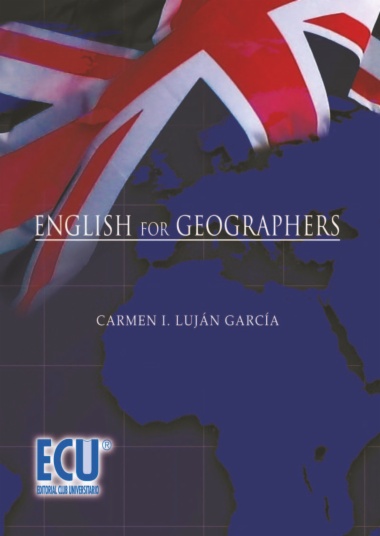English for Geographers is a textbook intended to be used not only by students of the university degree of Geography, but also by anybody interested in the field of geography. It is divided into seven different units, each of them dealing with a specific topic (introduction to geography, human geography, environmental geography, tourist geography, Internet for geographers, cartography and climatology). Each of the units offers the learners a variety of activities to improve their skills, mostly reading and writing in English, as well as the capacity to increase their vocabulary related to this field. Following the European philosophy that promotes the use of new technologies throughout the teaching/learning process, students are proposed a series of activities such as an online glossary (which allows students to build up their own classroom dictionary), and a class forum (to exchange their knowledge, opinions, and so on). Eventually, at the end of each unit, learners are asked to fill out a conscious learning grid chart in order to make them aware of their learning process, as encouraged by EHEA (European Higher Education Area). After fulfilling this course, students are expected to reach level B1 according to Common European framework of reference for languages.
- Cover
- Title page
- Copyright page
- Table of contents
- Description of the subject and the manual
- Abilities to be developed by students
- Ict work. Online course activity: a wiki and a glossary (Instructions)
- Unit 1. Introduction to geography
- 1.0. Introduction
- 1.1. Learning Objectives
- 1.2. Online Glossary
- 1.3. Warm-up
- 1.4. Reading text
- 1.5. Warm-up
- 1.6. Reading text
- 1.7. Suggested oral presentation activity
- 1.8. Bibliography/Webliography
- 1.9. Conscious Learning Grid
- Unit 2. Environmental issues
- 2.0. Introduction
- 2.1. Learning Objectives
- 2.2. Online Glossary
- 2.3. Warm-up
- 2.4. Reading text
- 2.5. Reading text
- 2.6. Reading text
- 2.7. Reading text
- 2.8. Reading text
- 2.9. Suggested oral presentation activity
- 2.10. Bibliography / Webliography
- 2.11. Conscious Learning Grid
- Unit 3. Tourist geography
- 3.0. Introduction
- 3.1. Learning Objectives
- 3.2. Online Glossary
- 3.3. Warm-up
- 3.4. Reading text
- 3.5. Warm-up
- 3.6. Reading text
- 3.7. Suggested oral presentation activity
- 3.8. Bibliography / Webliography
- 3.9. Conscious Learning Grid
- Unit 4. Internet for geographers
- 4.0. Introduction
- 4.1. Learning Objectives
- 4.2. Online Glossary
- 4.3. Warm-up
- 4.4. Reading text
- 4.5. Interesting Websites for Geographers
- 4.6. Suggested oral presentation activity
- 4.7. Bibliography / Webliography
- 4.8. Conscious Learning Grid
- Unit 5. Human geography
- 5.0. Introduction
- 5.1. Learning Objectives
- 5.2. Online Glossary
- 5.3. Warm-up
- 5.4. Reading text
- 5.5. Reading text
- 5.6. Suggested oral presentation activity
- 5.7. Bibliography / Webliography
- 5.8. Conscious Learning Grid
- Unit 6. Climatology
- 6.0. Introduction
- 6.1. Learning Objectives
- 6.2. Online Glossary
- 6.3. Warm-up
- 6.4. Reading text
- 6.5. Suggested oral presentation activity
- 6.6. Bibliography / Webliography
- 6.7. Conscious Learning Grid
- Unit 7. Cartography
- 7.0. Introduction
- 7.1. Learning Objectives
- 7.2. Online Glossary
- 7.3. Warm-up
- 7.4. Reading text
- 7.5. Suggested oral presentation activity
- 7.6. Bibliography / Webliography
- 7.7. Conscious Learning Grid
- Common european framework of reference for languages (CEFRL): Learning, Teaching, Assessment: Level chart
- Keys to activities
- Bibliography / Webliography

